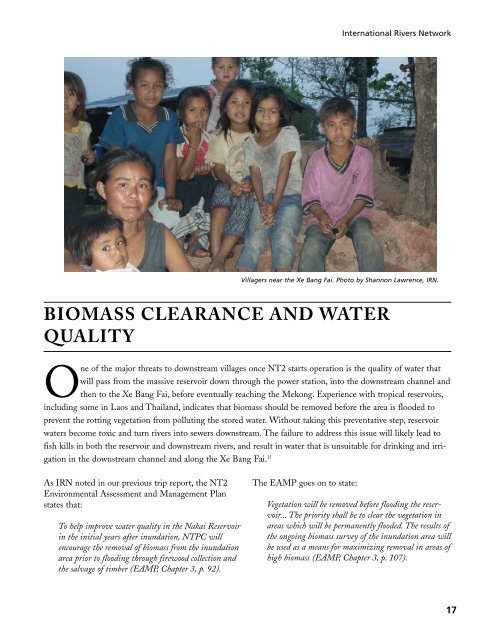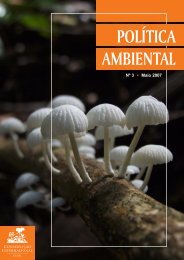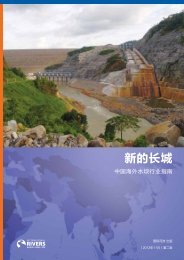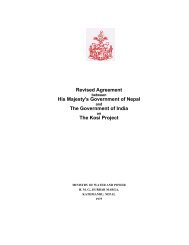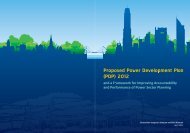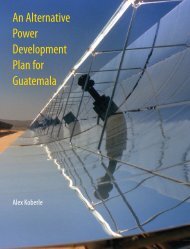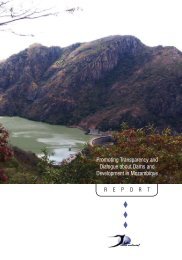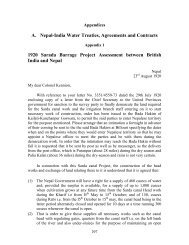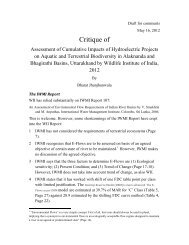Nam Theun 2 Trip Report and Project Update - BankTrack
Nam Theun 2 Trip Report and Project Update - BankTrack
Nam Theun 2 Trip Report and Project Update - BankTrack
Create successful ePaper yourself
Turn your PDF publications into a flip-book with our unique Google optimized e-Paper software.
International Rivers NetworkVillagers near the Xe Bang Fai. Photo by Shannon Lawrence, IRN.BIOMASS CLEARANCE AND WATERQUALITYOne of the major threats to downstream villages once NT2 starts operation is the quality of water thatwill pass from the massive reservoir down through the power station, into the downstream channel <strong>and</strong>then to the Xe Bang Fai, before eventually reaching the Mekong. Experience with tropical reservoirs,including some in Laos <strong>and</strong> Thail<strong>and</strong>, indicates that biomass should be removed before the area is flooded toprevent the rotting vegetation from polluting the stored water. Without taking this preventative step, reservoirwaters become toxic <strong>and</strong> turn rivers into sewers downstream. The failure to address this issue will likely lead tofish kills in both the reservoir <strong>and</strong> downstream rivers, <strong>and</strong> result in water that is unsuitable for drinking <strong>and</strong> irrigationin the downstream channel <strong>and</strong> along the Xe Bang Fai. 15As IRN noted in our previous trip report, the NT2Environmental Assessment <strong>and</strong> Management Planstates that:To help improve water quality in the Nakai Reservoirin the initial years after inundation, NTPC willencourage the removal of biomass from the inundationarea prior to flooding through firewood collection <strong>and</strong>the salvage of timber (EAMP, Chapter 3, p. 92).The EAMP goes on to state:Vegetation will be removed before flooding the reservoir...The priority shall be to clear the vegetation inareas which will be permanently flooded. The results ofthe ongoing biomass survey of the inundation area willbe used as a means for maximizing removal in areas ofhigh biomass (EAMP, Chapter 3, p. 107).17


